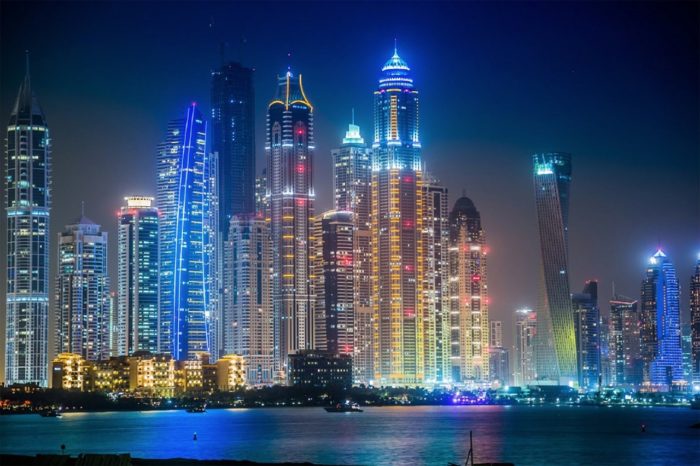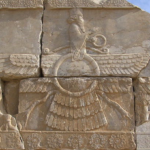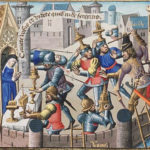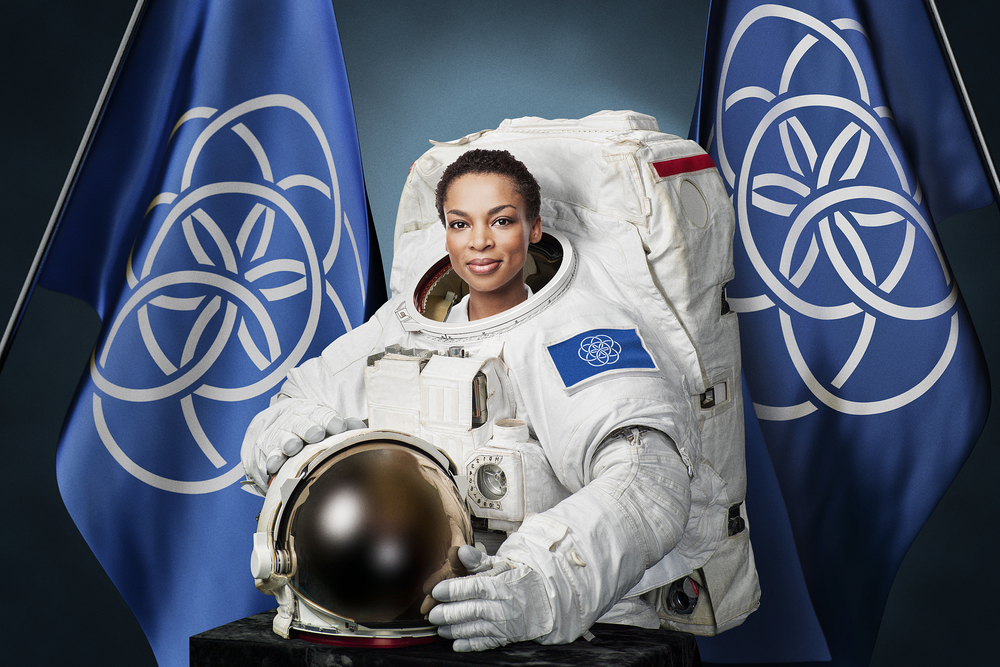
The Middle West hiding in the Middle East
 There is something wrong with the term “the Middle East”. To come straight to the point, it should really be the Middle West.
There is something wrong with the term “the Middle East”. To come straight to the point, it should really be the Middle West.
Of course it won’t escape the reader’s attention that this thought bubble occurs in a moment angst about the relationship between the “West” and “the Middle East”.
And in the western public mind, as projected by popular media, danger lurks everywhere. Some dangers (religious fanaticism and terrorism) are sadly all too real – and the victims are all over the world, although it has to be said largely in the Middle West.
Other existential dangers are well, fanciful. The “burkini”, or to describe it accurately “modest” or “sun safe” swimwear. Notably, credit for the invention goes to an Australian entrepreneur: Aheda Zanetti of Ahiida. She created it as part of a project seeking to make Australian beach culture more accessible to Muslim women. Nothing more Aussie than the beach. More freedom for women, more community harmony. Nonetheless, the clothing has now risen to the status of cultural notoriety. If only we lived in better times. One thing is clear – we are long past the era when anyone is entitled to dictate to women what they should or shouldn’t be wearing.
As Rudyard Kipling famously put it: “East is East and West is West, and never the twain shall meet”. Wonderful poetry, and in times like this, one might be tempted to agree.
And yet, the Middle West. All this talk about the relationship between the West and East gets one thinking. In our cultural imaginations we have the West, the Middle East (with the Indian subcontinent lodged somewhere in between) and then suddenly we arrive at “the East”.
But the major cultural lines of Eurasia aren’t like that. The transition from “West” to “East”, if it occurs anywhere at all, falls somewhere around the eastern frontier of Pakistan and Afghanistan. Everything to the left is “the West” and most of what is on the right is the “East”.
But for convenience let’s leave “the West” as a referent to Europe and its descendant cultures. The Middle East … well that really doesn’t fit for that part of the world between Athens and the Indus Valley. The Middle West is much better.
So let’s summon some evidence for this bold claim.
Alexander the Great (Sikander as he is known in Afghanistan) is a good place to start. His conquests are legendary and created the Hellenistic world which reached as far as the Indus Valley. Greek and Ancient Persian cultures melded and contributed to the emergence of the later West. A process accelerated by the Romans, who loved all things Greek and took “the West” all the way to the borders of Scotland.
Go eastwards beyond the Indus Valley, and you are (in the main) in the world of Hinduism and Buddhism and in intellectual and cultural traditions and histories that really are “eastern”. With some exceptions, until modern times, this eastern world had little influence on the culture or philosophy of the West and vice versa. The “East” did however reach all the way to Japan and shape a common cultural world over an entire part of the globe.
Meanwhile, back in the West, consider the European city of Constantinople (now Istanbul). Originally, it was founded as Byzantium by Greek colonists in an ancient time when forests covered the Mediterranean shore and from which the tales of Jason and Odysseus come. A thousand years later Byzantium was re-founded by Constantine, the first Christian Roman Emperor, as “New Rome” (Constantine’s city as it became known).
And in this New Rome the ancient classical past and the new Christian religion from Judea found common cause. That city was to remain the capital of the Roman Empire for another thousand years. And just to debunk some western snobbery about the “Byzantines” (thank you Mr Gibbons) – they still called themselves Romans – and so did everyone else – and their empire still reached as far as Spain up until the 7th century. In Constantinople, Roman scholars shared the world of Euclid, Homer, Ovid, Ptolemy and Gallen with the Torah stories of Moses, the prophets and the Gospels. It would have seemed a strange Roman world to the Romans of Caesar’s time, but it was still Roman, and undoubtedly western. It was the epicentre of a Christian Roman world. It was the city of the “True Cross” and of Sancta Sophia. Witness this account of Emperor Heraclius’ triumph over the Persians celebrated in true Roman style in 629 AD.
Heraclius returned to Constantinople … with his spoils, his victorious army, … His entry was celebrated in the style of an old Roman triumph, and the Senate conferred on him the title of the “New Scipio.” The whole of the citizens, bearing myrtle boughs, came out … and the ceremony concluded with the exhibition of the “True Cross” before the high alter of St. Sophia. Heraclius afterwards took it back in great pomp to Jerusalem. This was, perhaps, the greatest triumph that any emperor ever won. Heraclius had surpassed the eastern achievements of Trajan and Severus, and led his troops further east than any Roman general …” The Byzantine Empire p 139 C.W.C. Oman
Roman and Christian; and for that matter, Western.
The arrival of the Islam re-ordered the western cosmos – yet again. Much of what had been the Roman Empire became part of the Islamic Caliphate, initially with its capital in Damascus (earlier part of the Roman empire), later Baghdad and later still in Turkish times, back in Constantinople-Istanbul.
And when Constantinople fell to its Turkish conqueror, Mehmet (Mohammad) II, he wasted no time in claiming the title “Caesar of the Romans” (a claim recognised by the Orthodox Church). New Rome changed yet again – now the capital of an Islamic “Roman” Empire. To the city that had once hosted the True Cross were added new holy relics: the reputed Mantle of Muhammad and Muhammad’s letter announcing his mission to Heraclius, Emperor of the Romans.
If we follow the thread of history, ironically enough, the last true “Caesar” (the last Ottoman Emperor – Mehmed VI) died in exile in San Remo, in 1926. Roman to the last.
The history of the West is intertwined. From the clerical scholars who took the “learning of the Arabs” from Toledo to Oxford, to the reception of the organisation of the world as nation-states. Consider Ibn al Haytham, who taught the West how we see. Consider Aristotle, a Greek philosopher. He was a favourite among philosophers of the Islamic world. One of his greatest commentators, Avveroes, an Islamic judge in his day job, wrote his commentaries in Arabic. He lived in Islamic Spain – the then western edge of the then Middle West. His commentaries became the bread and butter of the revolutionary new Aristotelian school of thought in medieval Europe. Avveroes contribution is celebrated by an appearance among the philosophers of the “School of Athens” – the masterpiece fresco in the Vatican. It’s hard to unpick the threads here – and there is no need. The story is part of the common shared story of the West.
Heavens above! We share the same sky, not only literally – but metaphorically. In Arabic, the constellations share many of the names we know. Ursa Major and Minor, the big and little bear, in Arabic ad-Dubb al-akbar and Al Dubb al-asghar. Aquila, the Eagle, Al ‘ekab in Arabic, Cancer, the crab, As-sarattan, Leo, the Lion, Al-‘asad. Conversely, in English many of our star names carry an Arabic heritage: Betelgeuse, Rigel, Aldebaran, Acamar, Fomalhaut, to mention some of the more well-known. The Indians and Chinese (to say nothing of the rest of the world) have their own sky myths.
The Qur’an is one final piece of evidence that when we think of the lands to the east of Athens, “the Middle West” is the right term.
Of course the Qur’an is the foundational religious text of the Middle West, but it also a literary and cultural repository. What the King James Bible does for English, the Qur’an does for Arabic, but far more strongly. The core vocabulary and grammar of the Arabic language is defined by the Qur’an text. And Arabic was to become the “Latin” of the Middle West. What Latin was to the scholars of Europe down to the time to Sir Isaac Newton, Arabic was to the scholars of the Middle West.
The Qur’an, it may surprise some readers to learn, is not “Eastern’. Not in the sense we think of Hindu or Buddhist texts as Eastern. Rather much of the Qur’an is taken up with figures and stories familiar to the West. Moses, Joseph, the Pharaoh, Mary, Jesus, Job, Satan, God, the Romans, are all familiar points of cultural reference that appear in its pages. Judgment day, a central theme of the Qur’an, is a primarily Christian religious concept. The Qur’an continues the Judeao-Christian narrative. It re-tells these ancient stories and concepts in a new way – but indisputably the stories are familiar western stories.
By contrast, while one learns much about the West in the Qur’an, one learns nothing about the East – neither Buddha or Krishna are named by it. Indeed one learns virtually nothing about the paganism of Arabia. From the Qur’an, although it does not agree, we know Christians have a Trinity. We know that Jesus is the centre of the Christian faith, and the Qur’an recognises him as “the Word” and “the Spirit” of God. We know the sacred book of the Jews is the Torah and of Christians the Gospels. The Qur’an sees itself as confirming the teachings of the “People of the Book”: Jews and Christians. It’s no accident that Islam’s third holiest site: the Dome of the Rock – is in Jerusalem.
The Qur’an indeed refers back to Abraham – a common spiritual ancestor for all Westerners. Abraham, who as the Qur’an states, was not Jewish, because he lived before Judaism, who was not Christian, moreso. He was part of that common monotheistic orientation that the Qur’an calls “Islam”. Not Islam the religion which emerged from Muhammad’s teachings – but islam – a mystical orientation to the divine and a way of life taught by the prophets of the West all the way back to a past which was ancient even when Muhammad walked the Earth.
When we think of this part of the world we are in no eastern place. We are in “the Middle West”.
Winding forward to the 21st century – well we live in the age of global culture. And coming generations will understand it much better than we do. North-South-East-West – all our differences – are matters of little account – in the face of our shared humanity and shared home. In our times, it is more sensible to seek out what we share rather than where we differ.





